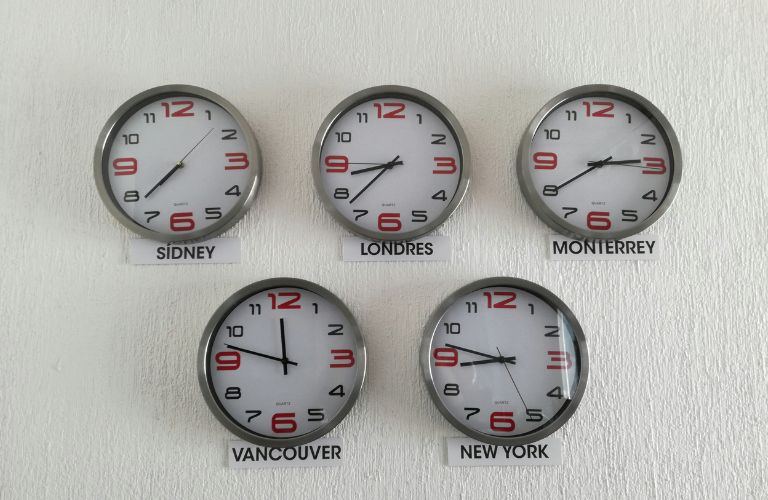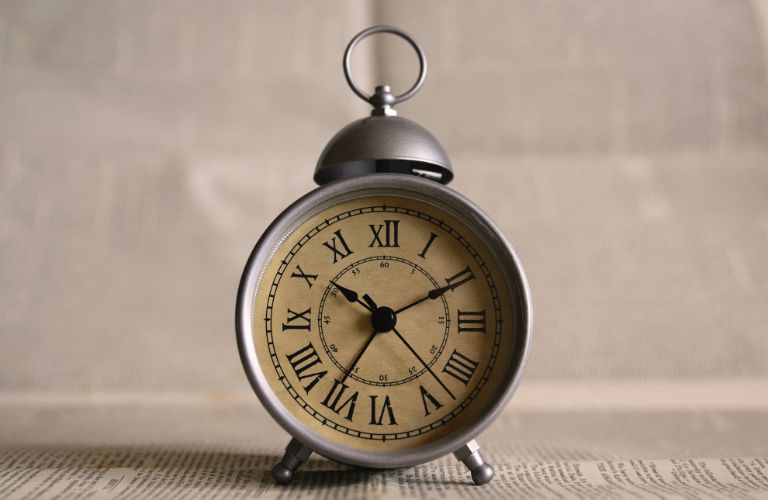Learn What Goes Behind the Scenes to Measure World Time
In our world where communication and travel span multiple time zones, it is fascinating to consider how we keep everyone in sync. From New York to Melbourne, a second is always a second, and this uniformity is crucial for various aspects of modern life, from international business to aviation and the internet.
The answer to this synchronization puzzle lies in an internationally agreed standard known as Coordinated Universal Time (UTC). But what exactly is UTC, and how is the world time measured?
Understanding Coordinated Universal Time (UTC)
UTC, or Coordinated Universal Time, is the world’s time standard. It is the successor to Greenwich Mean Time (GMT) and is used as the basis for timekeeping across the globe. The concept of UTC ensures that the time can be accurately compared and coordinated no matter where you are.
UTC is defined by an agency of the United Nations called the International Telecommunication Union. This time standard is derived from two key measurements: the ticking of hundreds of ultra-stable atomic clocks (known as International Atomic Time or TAI) and the rotation of the Earth (Universal Time or UT). Nations worldwide set their local time by adding or subtracting from UTC depending on their geographical position.

The Origin of the World Clock
The idea of a world clock, as we understand it today, began to take shape in the early 1960s. This was shortly after Louis Essen, a British physicist, developed the first practical atomic clock. Before this invention, the most accurate timekeeping devices used vibrating quartz crystals. However, these quartz clocks had a tendency to drift, losing or gaining seconds daily.
Louis Essen’s atomic clock utilized the quantum properties of cesium atoms to maintain extremely precise timekeeping. This breakthrough solved the longstanding problem of second hands running too fast or too slow. As a result, the first day of the 1960s marked the introduction of UTC, bringing a new level of accuracy and reliability to time measurement.
How Does the World Clock Work?
To understand how the world clock works, it is essential to delve into the components that make it possible. The primary elements involved are atomic clocks and the measurement of Earth’s rotation.
Atomic Clocks and International Atomic Time (TAI)
Atomic clocks are the cornerstone of precise time measurement. They use the vibrations of atoms, typically cesium, to keep time. These clocks are incredibly accurate, capable of measuring time to within billionths of a second. Today, more than 400 highly stable atomic clocks are in operation around the world. Each of these clocks transmits a signal to the International Bureau of Weights and Measures (BIPM) in France. The BIPM compares these signals monthly to calculate the International Atomic Time (TAI). Each atomic clock is given a different weighting in this calculation based on its stability and accuracy.

Earth’s Rotation and Universal Time (UT)
While atomic clocks provide exceptional precision, they are not the only factor in measuring world time. Earth’s rotation, which historically served as humanity’s primary timekeeping method, still plays a crucial role. However, Earth’s rotation is not perfectly consistent; it fluctuates slightly from day to day and is gradually slowing down over long periods.
The International Earth Rotation and Reference Systems Service (IERS) measures Earth’s time, known as Universal Time (UT), by observing the positions of stars as the planet spins. This measurement is combined with International Atomic Time to produce Coordinated Universal Time (UTC). This combination ensures that our clocks remain in sync with the natural rotation of the Earth.
Accuracy and Adjustments: The Role of Leap Seconds
One of the fascinating aspects of maintaining accurate world time is the need to account for irregularities in Earth’s rotation. To keep Coordinated Universal Time (UTC) and Universal Time (UT) within 0.9 seconds of each other, the IERS makes periodic adjustments known as leap seconds. Leap seconds are added to or subtracted from UTC to align it with Earth’s slowing rotation.
The first leap second was introduced in 1972, and since then, there have been 26 additional leap seconds. The need for these adjustments varies; some years see multiple leap seconds, while others have none. Interestingly, in 2020, Earth’s rotation sped up, leading scientists to speculate whether a negative leap second might be needed for the first time.
The Evolution of Timekeeping: From Sundials to Atomic Clocks
Humanity has been measuring time for thousands of years, starting with the observation of Earth’s rotation. Early timekeeping methods included sundials, water clocks, and candle clocks, each providing a rudimentary way to track the passage of hours. The invention of mechanical clocks during the Renaissance marked a significant leap forward. These clocks used weights, springs, and pendulums to measure time more accurately.
The 20th century brought the development of quartz clocks, which were far more precise than their mechanical predecessors. However, it was the invention of atomic clocks that truly revolutionized timekeeping. By locking quartz crystals to the natural resonance of cesium atoms, scientists achieved an unprecedented level of accuracy.
[Extra read: Common Data Privacy Issues in India]
How Do Atomic Clocks Work?
Atomic clocks operate using oscillators, devices that exhibit periodic behavior similar to a pendulum’s swing. The most common oscillator in clocks is a quartz crystal, which vibrates thousands of times per second. While quartz crystals are relatively stable, they are not perfectly so. For tasks requiring extreme precision, such as space navigation, atomic clocks are essential.
These clocks lock the vibrations of quartz crystals to the natural resonance of atoms. When exposed to precise frequencies, atoms change their energy state, a phenomenon that can be detected and monitored. This allows for the correction of any drift in the quartz crystals’ timing. The digital clocks on our computers and phones, for instance, receive their time from atomic clocks maintained by institutions like the National Institute of Standards and Technology (NIST).

The Precision of Atomic Clocks
The most accurate atomic clocks currently rely on cesium atoms. These clocks are precise to within one-three hundred-millionths of a second per year. To put this into perspective, a typical quartz wristwatch may be accurate to within about 15 seconds per month. Inside cesium atomic clocks, electromagnetic waves are directed at cesium atoms, causing them to make a quantum jump to a different energy state. This jump occurs only when the atoms absorb waves of a precise frequency, enabling extremely accurate time measurement.
The international standard unit of time, the second, is defined based on the frequency of cesium atoms. Specifically, a second is the duration of 9,192,631,770 cycles of the radiation corresponding to the transition between two energy states of cesium atoms. This precise measurement allows atomic clocks to count every wave cycle, ensuring accurate timekeeping down to tiny fractions of a second.
The Future of Timekeeping: Optical Atomic Clocks
While current atomic clocks operate at microwave frequencies, the future lies in optical atomic clocks. These clocks function at optical frequencies, with trillions of clock ticks per second. One such clock, the strontium atomic clock, is accurate to within 1/15,000,000,000 of a second per year. This level of accuracy means the clock would not have gained or lost a second since the beginning of the universe, 13.8 billion years ago.
The Impact of Accurate Timekeeping
Accurate time measurement has profound implications for science and technology. It has helped to confirm Einstein’s theories about time dilation and the relationship between time and the speed of light. Precise timekeeping is also crucial for the Global Positioning System (GPS), which relies on synchronized clocks in satellites and ground stations to provide accurate location data.

Measurement of Time, Our Fourth Dimension, is No Easy Feat. A Lot Goes Behind the Scenes to Make it Happen.
In conclusion, the world clock, represented by Coordinated Universal Time (UTC), is a marvel of modern science and engineering. It harmonizes the ticking of hundreds of atomic clocks with the natural rotation of the Earth to provide a precise and universally accepted standard of time. From its inception in the 1960s with the advent of atomic clocks to the potential future of optical atomic clocks, the journey of measuring world time reflects humanity’s relentless pursuit of precision and synchronization. This accurate timekeeping underpins many aspects of contemporary life, ensuring that whether we are in New York or Melbourne, we remain perfectly in sync.
[Also read: What is Metaverse? Is it a Reality or Just Sci-Fi?]

